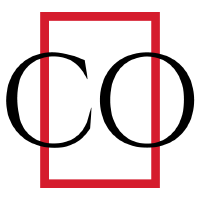Topic Menu
► Topic MenuTopic Editors

Upper Aerodigestive Tract Cancer
Topic Information
Dear Colleagues,
Upper aerodigestive tract cancer (UATC) is aggressive malignancy derived from stratified epithelium of the upper aerodigestive tract, including oral cavity, larynx and oropharynx, and esophagus. Over one million new cases of UATC are diagnosed worldwide every year, with oral and esophageal cancers being the most common types. Human papillomavirus (HPV)-positive and -negative tumors are considered distinct diseases with distinguishing biological and clinical features. Effective targeted regimens are still unavailable for most UATC, which is highly aggressive. For example, 5-year survival rate of oral cancer patients is approximately 50%. Conventional cytotoxic chemotherapeutic options for oral cancer patients are limited and often ineffective. More importantly, the short-term effects (e.g., mucositis, odynophagia) and long-term toxicities (e.g., xerostomia, dysphagia, ototoxicity) from treatment substantially affect quality of life and rival the impact of the cancer itself. This Topic aims to highlight the latest advances in both basic and clinical studies on UATC, with the goal of promoting research of pathophysiology of UATC to advance the healthcare and life quality of its patients. Original research papers and review articles are welcomed.
Dr. De-Chen Lin
Dr. Uttam K. Sinha
Topic Editors
Keywords
- head and neck cancer
- esophageal cancer
- human papillomavirus
Participating Journals
| Journal Name | Impact Factor | CiteScore | Launched Year | First Decision (median) | APC |
|---|---|---|---|---|---|

Cancers
|
5.2 | 7.4 | 2009 | 17.9 Days | CHF 2900 |

Cells
|
6.0 | 9.0 | 2012 | 16.6 Days | CHF 2700 |

Current Oncology
|
2.6 | 2.6 | 1994 | 18 Days | CHF 2200 |

Journal of Clinical Medicine
|
3.9 | 5.4 | 2012 | 17.9 Days | CHF 2600 |

Journal of Personalized Medicine
|
3.4 | 2.6 | 2011 | 17.8 Days | CHF 2600 |

MDPI Topics is cooperating with Preprints.org and has built a direct connection between MDPI journals and Preprints.org. Authors are encouraged to enjoy the benefits by posting a preprint at Preprints.org prior to publication:
- Immediately share your ideas ahead of publication and establish your research priority;
- Protect your idea from being stolen with this time-stamped preprint article;
- Enhance the exposure and impact of your research;
- Receive feedback from your peers in advance;
- Have it indexed in Web of Science (Preprint Citation Index), Google Scholar, Crossref, SHARE, PrePubMed, Scilit and Europe PMC.


